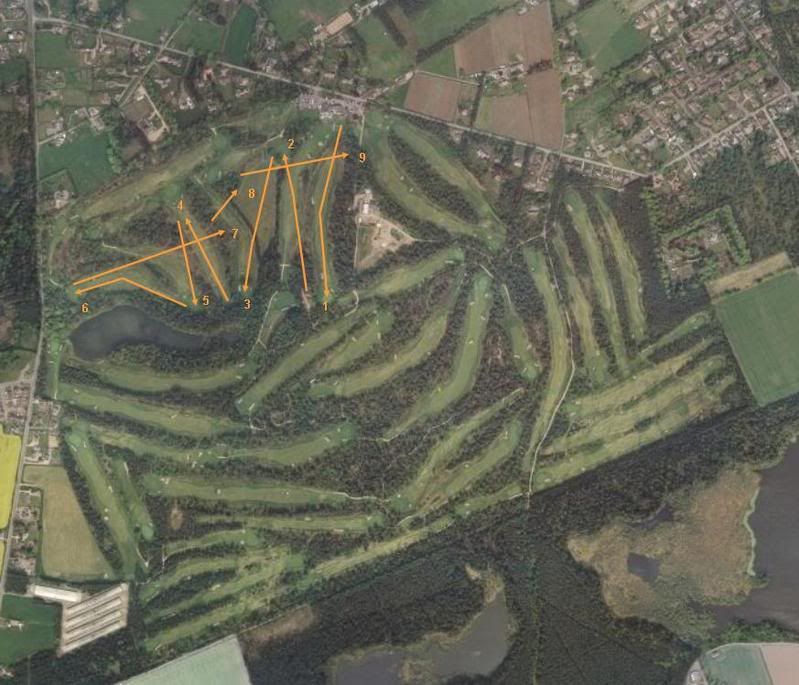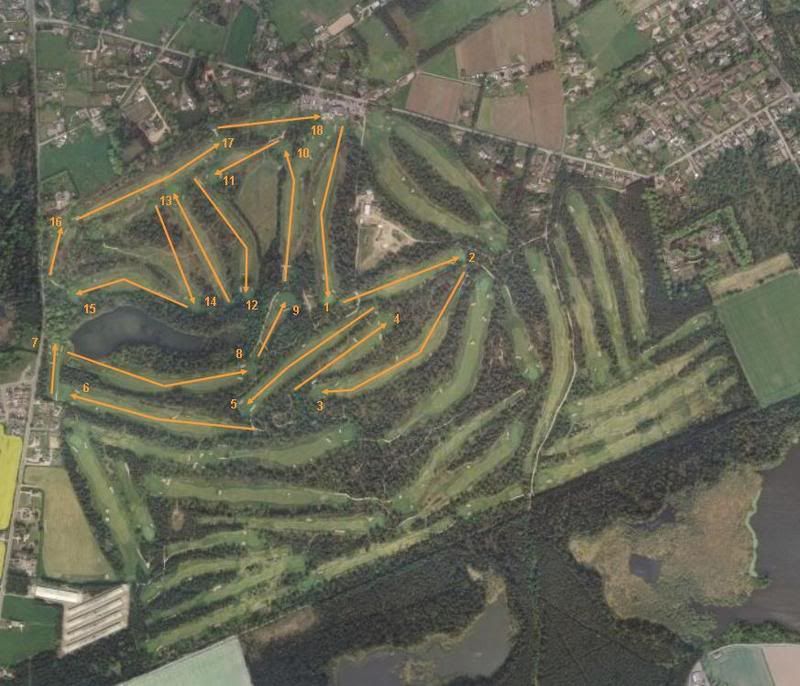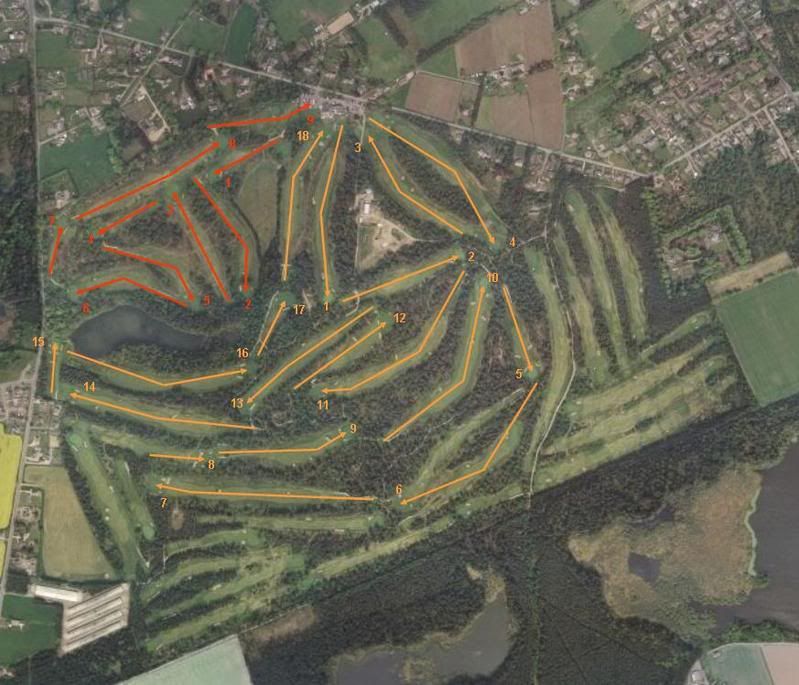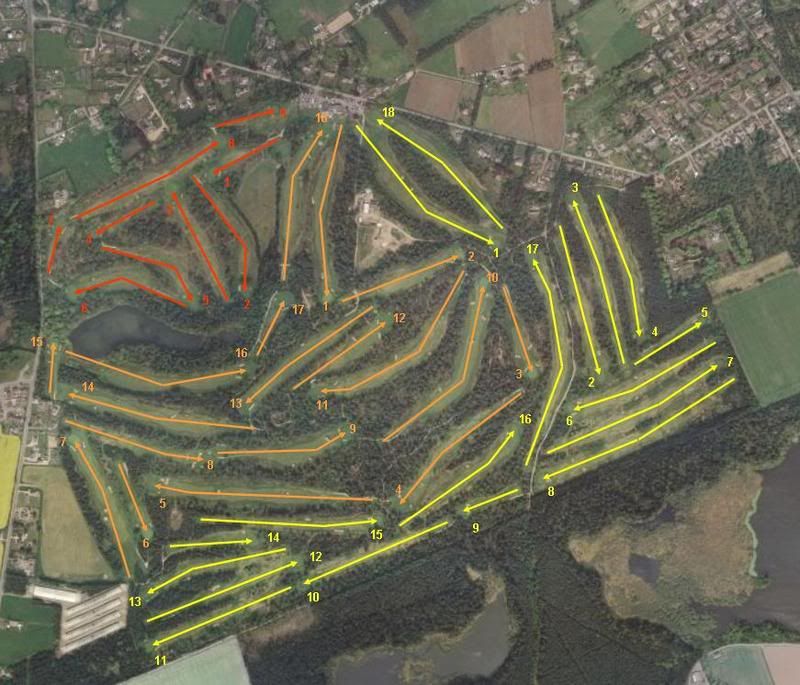It has been said by some that The Rosemount course at Blairgowrie is the best inland course in Scotland. Well, Gleneagles and Loch Lomond probably have something to say about that, but the Rosemount, along with the Wee, are a delightful golfing experience, and certainly not far behind the others previously mentioned I’d say.
I’ve taken this a little beyond a basic photo tour as I was so intrigued by the clubs heritage. There seem to be so many cases back in the 1920s and 30s of courses designed by a well known architect who then seek out the involvement of another not long after. This always leaves the question, who exactly did what?
The club at Blairgowrie was formed in 1889 and the initial 9 hole course was set out over land leased from the Dowager Marchioness of Lansdowne, adjacent to Black Loch, just south of Blairgowrie. The course was believed to have been laid out by one of the founding members, Major Chalmers, and was initially very much a do it yourself affair.
A progress report in the local newspaper dated 30 March 1889 gives an excellent idea of how the course, and no doubt many others in that era, was constructed: “The golf course of the Blairgowrie Club has now been laid out, the nine holes cut and numbered flags placed on them. The course can now be played over, but much requires to be done to put it in really good playable condition. It is expected that by mid April it will be in tolerable playing trim and meantime men have been employed filling up old rabbit holes and cart tracks. A large quantity of broom roots and other rubbish still required to be collected and burned, as well as several patches of heather. The putting greens will necessarily be somewhat rough this season. The proper time for lifting and laying turfs is the fall of the year. New putting greens will then be laid for every hole.”
On 16 May 1889, just before the course opened, Old Tom Morris was invited by the club to make a visit that was recorded in the local paper. He went over the ground with the committee, and approved of everything done so far. At a time when inland courses were few and far between he stated that it was the most beautiful inland green he had ever seen and was also reported to have said “when further improvements contemplated had been carried out the roughness would disappear”. The clubs centenary book refers to Old Tom Morris as the courses “layout advisor” and records that he was paid “for advice regarding golfing greens and other expenses coming to Blairgowrie, £1.14.1d” an amount that R Kroeger in his book The Golf Courses of Old Tom Morris, refers to as being his normal design fee. Old Tom also arranged an agency for his golf clubs to be sold at the club.
By the end of the first year of existence the course bogey score was set as 6, 5, 5, 4, 4, 5, 6, 3, 5 totalling 43, the longest hole was 431 yards, the shortest 132 yards.
The layout of the original 9 holes can be seen in the below plans, the first is a plan dated 1892, and the second an approximate overlay I’ve produced of the original course over the current aerial photograph:


In 1914 the club consulted Alister MacKenzie, who produced a “favourable report and an exciting plan” to make the course 18 holes, but the onset of the First World War delayed the work. By 1925 the club was back to a financial position to proceed, and with new lease agreements in place and also extra land acquired, they again consulted Mackenzie.
According to the Centenary book, MacKenzies report stated: “The best way of utilising the new ground would be to play the first hole as at present, then get out on the new ground and play eight holes, come back to the second and play the remaining eight holes of the old course with the addition of a new short hole.” From the plan in the centenary book (afraid I can’t get a good scan of it), it appears that before MacKenzie’s plan was carried out, some alterations had already been carried out, and there is mention of some lengthening in 1911. Its possible that the 7, 8 and 9, which included some crossover fairways, had been moved to avoid the crossover nature of these holes, possibly with some newly acquired land, or it could be that this was part of MacKenzies work? Never the less, the new course eventually opened in 1927.
Here is approximation of Alister MacKenzie’s layout, derived from a plan in the clubs Centenary book:

However, there appears to have been some dissatisfaction with the course, possibly with courses getting longer they wanted a course that could be stretched still further, and the reused holes from the original layout didn’t offer this. Therefore the club decided to investigate a longer course with an additional shorter nine hole course. An agreement was reached to purchase the land leased from the Lansdowne family, but also additional land, to enable this. This time the advice was sought of James Braid.
The long standing club professional from the time, is reported to tell a story of Braid, with his long legs striding through the heather and marking with stakes the new routing of the course, before returning to Blairgowrie Station to catch the night train back to London and Walton Heath. It is though known that he sent a 4 page letter advising the club on details of the routing, positions of bunkers etc. The Braid course opened in 1934, with the addition of 8 totally new holes, utilising most of MacKenzie’s front nine, while the remains of the old course, where to become the short nine hole course.
Here is approximation of James Braid’s layout, derived from a plan in the clubs Centenary book:

I believe this showed how Braid originally designed it, but it appears that the 3rd and 4th as noted, became the 9th and 10th to allow for a return to the clubhouse.
I believe that some time in the 1960s the greens suffered to the extent that they were all re-laid, so how much of either original MacKenzie or Braid contouring remains isn’t clear.
In 1972 the club again decided to purchase further land to once again expand. Peter Alliss and Dave Thomas were consulted and they came up with a layout and work commenced in 1974. Some alterations and additions were required to the existing courses. On the short course, the 9th was shortened to a par 3 to make way for a larger car park. On the Rosemount, the current 4th was rerouted with a new tee and fairway, but to the original green. Allis and Thomas designed 2 new holes for the Rosemount, the current 6th and 7th while extending the current 8th from a par 3 to a par 4. The biggest change though was giving over 2 holes to the new course, to allow for both courses to start and finish by the clubhouse. To further aid in this routing, the holes that were to become the 1st and 18th on the Lansdowne were switched and reversed.
This is todays layout of all the courses at Blairgowrie. The Wee is in red, Rosemount in Orange and Lansdowne in yellow:

I must stress that the plans produced are approximate and I must say thank you to Douglas Cleeton, the managing secretary at Blairgowrie Golf Club for providing me with a copy of the clubs centenary book “Blairgowrie Golf Club 1889 – 1989”, edited by Alex Macintosh. Thanks also to Melvyn for sending me a scan copy of the plan from The Golf Courses of Old Tom Morris by R Kroeger.
I’ll begin posting the photo tour shortly.
Cheers,
James